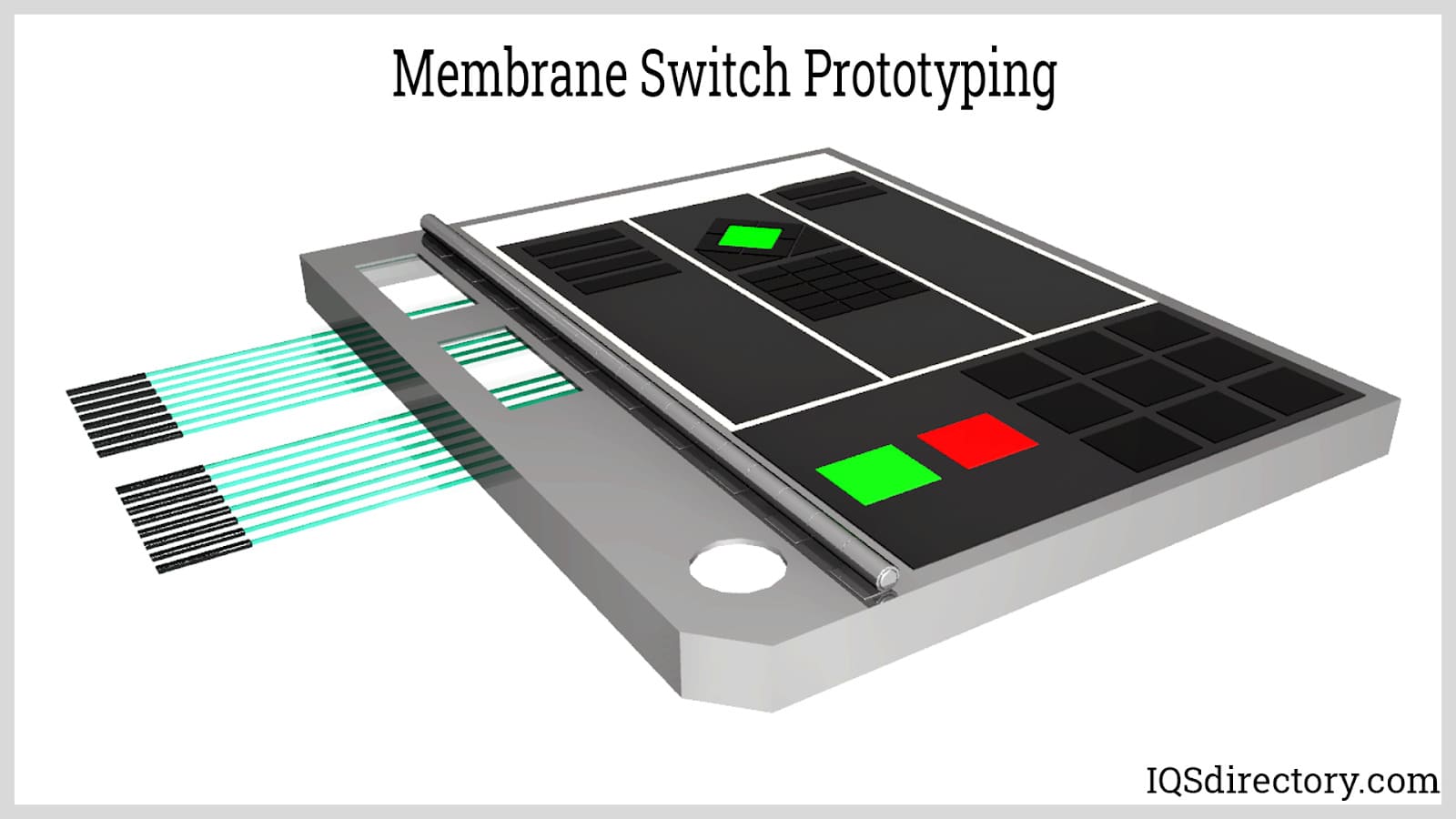Discover Just How Membrane Switches Function and Their Role in Modern Electronic Devices
Membrane Switches stand for a sophisticated integration of modern technology and style within the world of modern electronic devices, serving as important user interfaces in various tools. Comprehending the intricacies of Membrane button functionality and their more comprehensive implications in enhancing individual experience invites more exploration right into their design, benefits, and the innovative advancements forming their future in modern technology.
What Are Membrane Buttons?

Membrane buttons are identified by their resilience and resistance to environmental aspects, such as dirt, wetness, and severe temperature levels. They can be tailored with numerous graphics, shades, and tactile feedback options, enhancing user experience while maintaining aesthetic appeal - membrane switches. Additionally, the consolidation of printed circuits enables seamless integration into devices, improving total capability.
The adaptability of Membrane switches is evident in their ability to sustain both complicated and easy control functions. They can incorporate attributes such as LED signs and touch-sensitive innovation, accommodating details customer demands. As modern technology remains to progress, Membrane Switches remain necessary for making it possible for instinctive and efficient interface, thus playing a crucial duty in the improvement of contemporary electronic gadgets.
Components of Membrane Buttons
Membrane switches are made up of a number of essential parts that function together to create a trusted and useful user interface. The primary aspects consist of the graphic overlay, sticky layer, spacer layer, and conductive traces.
The visuals overlay offers as the interface, commonly printed on a versatile substratum such as polyester or polycarbonate. This layer not just provides visual allure however additionally consists of tactile responses, visual signs, and safety functions. Beneath the graphic overlay exists the adhesive layer, which safeguards the switch to the tool and ensures durability against environmental anxieties.
The spacer layer is critical for maintaining the essential void in between the graphic overlay and the circuit layer. When pressure is used, this space permits for the activation of the switch. The conductive traces, typically made from silver or carbon, develop the electric paths that complete the circuit when the switch is involved.
Additionally, a support layer may be consisted of for structural assistance and insulation. These elements team up perfectly, ensuring that Membrane switches are both durable and user-friendly, making them essential in different modern-day electronic applications.
Just How Membrane Switches Job
How do Membrane Switches function successfully within electronic tools? Membrane Switches operate the concepts of pressure-sensitive innovation, using a layered building that consists of visuals overlays, sticky layers, and conductive aspects. When a customer applies stress to the switch, the top layer deforms, enabling the conductive elements below to make call and finish visit this web-site an electric circuit. This action causes the wanted function within the gadget.
The style of Membrane switches is essential for their efficient operation (membrane switches). The layers are meticulously crafted to offer tactile feedback, resilience, and resistance to ecological elements such as moisture and dirt. The addition of domes-- tiny, increased areas within the button-- improves responsive response, offering users with a noticeable click experience upon activation
Additionally, Membrane switches can be customized in regards to size, shape, and graphics, making them suitable for numerous applications. They are commonly utilized in control panels, clinical tools, and consumer electronic devices as a result of their streamlined design and reliability. On the whole, the reliable performance of Membrane buttons is crucial in enhancing user communication and guaranteeing seamless procedure in contemporary electronic tools.

Applications in Modern Devices
Utilizing their one-of-a-kind layout and performance, Membrane buttons have ended up being indispensable elements in a large range of modern electronic tools. These functional user interfaces are used in customer electronic devices, commercial tools, medical tools, and automotive controls, giving smooth user interaction.
In customer electronics, Membrane switches are frequently found in home appliances like microwaves, washing equipments, and other household tools, where they allow instinctive control with a sleek profile. Their inconspicuous design promotes assimilation into compact gadgets, improving aesthetic appeal without jeopardizing performance.
In commercial applications, Membrane Switches act as control panels for machinery, using longevity and resistance to severe atmospheres. Their capacity to withstand dampness and pollutants makes them suitable for use in manufacturing and handling industries.
Medical tools likewise benefit from Membrane switches, which are developed to be easy to clean and preserve, guaranteeing health in professional settings. They are typically made use of in analysis equipment, client tracking systems, and portable clinical tools, where integrity is paramount.
Advantages of Membrane Switches
One of the vital advantages of Membrane switches is their adaptability, which allows them to be customized for a selection of applications across multiple industries. These buttons can be created in various forms and dimensions, accommodating unique item needs while supplying smooth assimilation into devices. Their slim account makes it possible for a streamlined and compact style, commonly improving the visual charm of digital items.
An additional significant advantage is their toughness - membrane switches. Membrane switches are generally immune to dust, wetness, and chemicals, making them ideal for extreme settings. This resilience prolongs their life-span compared to conventional mechanical buttons, lowering the need for regular substitutes
In addition, Membrane Switches offer cost-effectiveness. The manufacturing process entails printing modern technologies that reduce production expenses, specifically for huge runs. This affordability, combined with reduced maintenance demands, makes them an appealing option for makers.

Verdict
Finally, visit this website Membrane Switches represent a considerable development in interface innovation within contemporary electronic devices. Their split building and construction, pressure-sensitive procedure, and flexibility to numerous applications emphasize their relevance throughout numerous sectors. The sturdiness and environmental resistance of Membrane Switches better enhance their appeal, making them a preferred choice for manufacturers seeking personalized and trusted remedies. As the need for resistant and user-friendly interfaces remains to grow, the role of Membrane buttons fit individual experience will definitely increase.
Membrane Switches represent an innovative combination of technology and style within the realm of modern electronic devices, serving as crucial interfaces in countless tools.In the realm of modern-day electronics, Membrane Switches offer as important components that promote individual communication with gadgets. As technology continues to evolve, Membrane Switches remain vital for making it possible for efficient and intuitive individual interfaces, thereby playing a crucial function in the innovation of modern digital tools.
Exactly how do Membrane Switches function successfully within digital devices? Generally, the efficient functioning of Membrane top article buttons is essential in enhancing individual communication and guaranteeing smooth procedure in modern-day electronic devices.